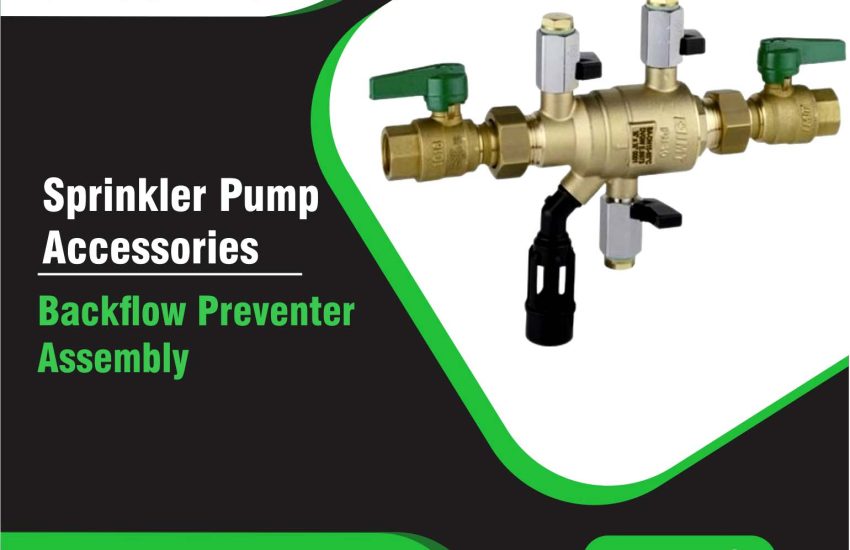Backflow Preventer Assembly is a crucial component for maintaining water safety and preventing contamination in potable water systems. It protects drinking water from pollutants by preventing the reverse flow of water, known as backflow. This article explores the specifications, features, and importance of Backflow Preventer Assemblies, providing essential information for contractors, engineers, and building owners.
What is a Backflow Preventer Assembly?
A Backflow Preventer Assembly is a device installed in plumbing systems to prevent the reverse flow of contaminated water into the clean water supply. Backflow can occur due to changes in water pressure or flow direction, such as during water main breaks or high demand. Backflow preventers use valves that allow water to flow only in one direction, stopping potentially hazardous materials from entering the potable water system.
Key Specifications of a Backflow Preventer Assembly
1. Types of Backflow Preventer Assemblies
Several types of backflow preventers serve different purposes. The most common include:
- Reduced Pressure Zone (RPZ) Assembly: Offers the highest level of protection, typically used in commercial and industrial settings.
- Double Check Valve (DCV) Assembly: Provides moderate protection, commonly found in residential applications.
- Pressure Vacuum Breaker (PVB): Often used in irrigation systems to prevent backflow caused by siphoning.
- Atmospheric Vacuum Breaker (AVB): Protects against backflow due to siphoning in low-risk scenarios.
Each type is designed to meet specific pressure, flow rate, and safety needs based on the application.
2. Materials
Backflow preventers are made from durable materials to ensure longevity in various environments. Common materials include:
- Brass: Known for strength and corrosion resistance, brass is popular in high-quality backflow preventers.
- Stainless Steel: Ideal for harsh environments, stainless steel offers excellent corrosion resistance.
- Plastic: Lightweight and corrosion-resistant, plastic preventers work well for residential and irrigation systems.
Material choice depends on factors like water pressure, temperature, and potential chemical exposure.
3. Pressure Rating
The pressure rating of a backflow preventer indicates the maximum pressure the device can withstand before failure. Typical pressure ratings range from 100 psi to 175 psi (pounds per square inch). Commercial and industrial models usually have higher ratings to accommodate greater pressure demands.
4. Flow Rate
The flow rate refers to the volume of water the backflow preventer can handle, typically measured in gallons per minute (GPM) or liters per minute (LPM). Backflow preventers typically handle flow rates from 20 GPM to 1000 GPM, depending on the system’s size and the installation requirements.
5. Size and Dimensions
Backflow preventers come in various sizes to match different piping systems. The most common sizes range from 1/2 inch to 12 inches in diameter, though manufacturers can provide custom sizes for larger applications. Correct sizing is crucial to ensure the preventer fits the plumbing system and meets flow capacity needs.
6. Check Valve Design
Backflow preventers rely on check valves to allow water to flow in one direction. These valves automatically close when backflow occurs, stopping contaminated water from entering the clean water supply. The check valve design plays a key role in the device’s effectiveness. Popular options include spring-loaded check valves and piston check valves.
7. Maintenance and Testing
To maintain proper function, backflow preventers require regular maintenance and testing. Procedures include:
- Visual Inspections: Checking for leaks, damage, or wear.
- Annual Testing: Testing pressure and flow to ensure the device functions properly.
- Cleaning and Part Replacement: Replacing worn or damaged internal components to ensure continued performance.
Importance of Backflow Preventer Assemblies
1. Protecting Potable Water Supply
The main role of a Backflow Preventer Assembly is to protect the potable water supply from contamination. Without proper backflow protection, hazardous substances like chemicals, sewage, or bacteria could flow into the clean water supply, posing significant health risks.
2. Compliance with Health and Safety Regulations
Most municipalities require backflow preventers to comply with local health and safety regulations. The Environmental Protection Agency (EPA) and the American Water Works Association (AWWA) enforce standards to ensure backflow prevention in both residential and commercial buildings.
3. Preventing Water Damage and Contamination
Backflow can lead to contamination and cause water damage. The reverse flow of water can flood areas of a building, damage plumbing systems, and create unsanitary conditions. Backflow preventers help avoid these risks, protecting both public health and property.
4. Cost-Effectiveness
Installing a backflow preventer requires an initial investment, but it saves money in the long run by preventing contamination, plumbing damage, and potential fines for failing to comply with regulations.
5. Enhanced Water Quality
Backflow preventers ensure the water supply stays clean, safe, and of high quality, suitable for drinking, cooking, and cleaning by preventing reverse water flow that could introduce contaminants.
Installation and Maintenance of Backflow Preventer Assemblies
1. Proper Installation
Backflow preventers must be installed according to local plumbing codes and regulations. A certified plumber should perform the installation to ensure it complies with all safety standards. Placement should occur at a point where it can protect the water supply from all potential contamination sources.
2. Routine Inspections and Testing
To ensure proper performance, backflow preventers require routine inspections and tests. These tests ensure the devices remain effective and prevent contamination. Regular maintenance helps avoid malfunctioning, ensuring the backflow preventer continues to provide reliable protection.
3. Repairs and Replacements
Over time, the components of a backflow preventer may wear out or become damaged. In such cases, the parts must be replaced, or the entire assembly may need to be upgraded to maintain proper protection. Use high-quality replacement components to guarantee continued performance.
Conclusion
A Backflow Preventer Assembly is an essential device that protects water safety and prevents contamination in potable water systems. Its specifications, including type, material, pressure rating, flow rate, and check valve design, must meet the specific needs of the application. Backflow preventers help safeguard public health, ensure compliance with regulations, prevent water damage, and maintain water quality. Proper installation, maintenance, and testing are key to maximizing the performance of backflow preventers and providing reliable water safety.


